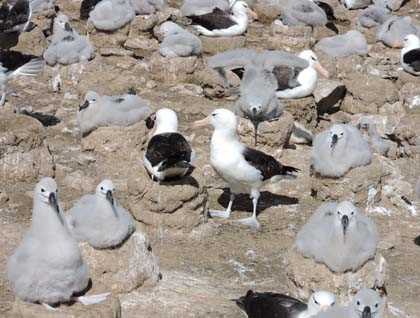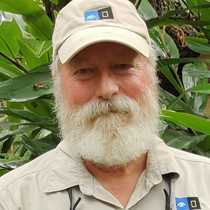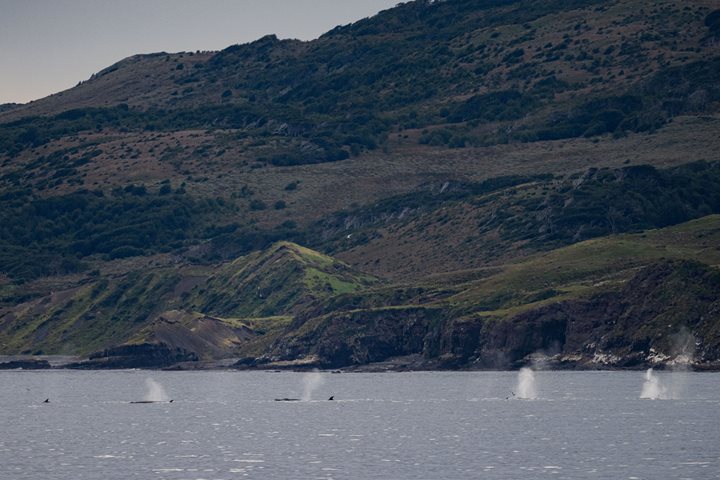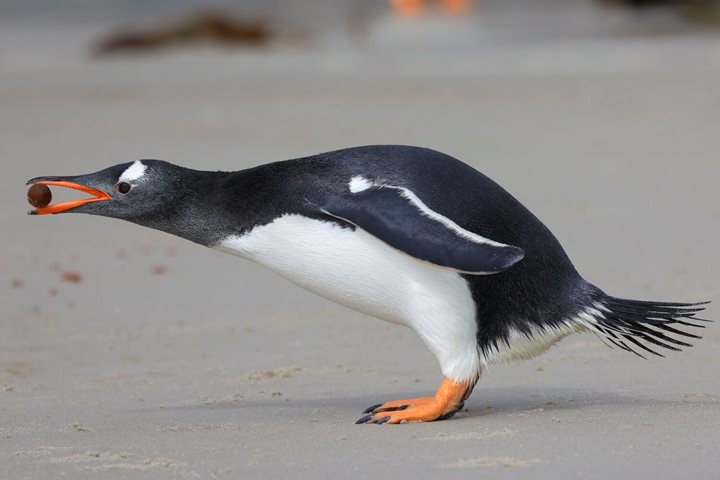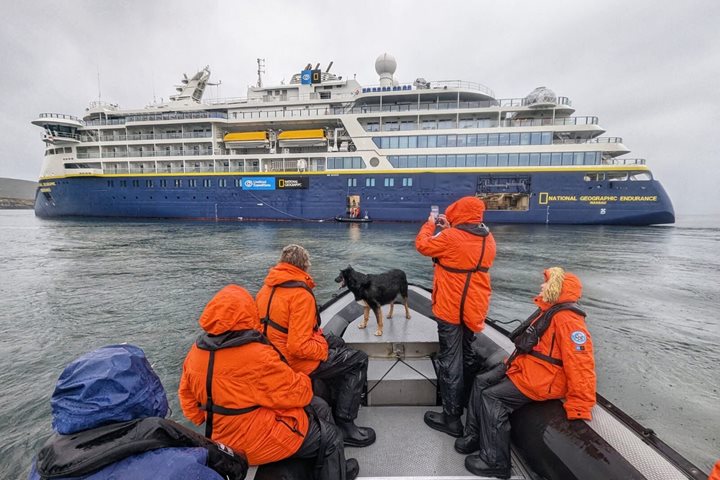The island of Steeple Jason, part of Jason Archipelago named for the 17th century British exploratory ship JASON, is seldom visited by tourists, because its isolation and exposure put it in the path of strong winds and heavy seas that commonly buffet this western region of the Falkland Islands. Conditions, however, were quite good for us this morning. We arrived at low tide and knew the rising tide would improve the landing situation throughout the morning, so we attempted a rather difficult landing on exposed algal-covered rocks assuming it would improve as time progressed. Most everyone attempted it. The conditions demanded that everyone be careful, and as a result, there were no injuries. Once everyone was ashore, we hiked past lounging southern sea lions and continued a mile or so to view a low coastal region that contains the largest black-browed albatross nesting colony in the Falkland Islands…something on the order of 150,000 nesting pairs. This huge number is hard to imagine, especially since it has the potential of 450,000 birds when all parents and chicks are present at one time…which probably seldom occurs. For those who wanted close-up views of the albatrosses (as well as a few rockhopper penguins that had gathered along the edge of the rocks below the nesting albatrosses), we had to deal with a healthy, thick growth of tussock (tussac) grass. As people worked their way through this dense and thick vegetation that at times towered over our heads, people better appreciated the extent and importance of this native clumping grass that defines the Falkland Islands. Most of it has long since disappeared with the coming of humans and their domesticated grazing animals in the 19th century, i.e. cattle and sheep, but many of the wildlife regions (including Steeple Jason) still abound with the stuff today. Once we pushed our way down through the tussock, we were rewarded with amazing views of nesting albatrosses and their large, downy chicks. This seems to have been a very successful breeding season, because literally every nest held a single large albatross chick. Generally, the adults court and lay their eggs in late September or early October. After about 68 days, the egg hatches and then it takes another four months or so to fledge the chick. Our visit today was about a month and a half before fledging takes place in late March.
By mid-afternoon, everyone was back aboard and we sailed for New Island, a wildlife trust site where we hoped to get better views of rockhopper penguins (as well as more black-browed albatrosses and king shags and tussock grass). This was a fairly quick landing that required an easy hike to the windward, raised sandstone cliffs on the far side of the island. Here, we were very successful in finding lots of rockhopper penguins, some standing and lounging right next to the trail, as well as more nesting black-browed albatrosses and a couple colonies of nesting king shags. Valentine’s Day wasn’t wasted on the black-browed albatrosses, because there was plenty of pair bond reinforcement going on, even this late in the breeding season. We watched as couples touched, preened, danced, and made pleasant cooing sounds to each other. The caretakers, John and Darlene, opened up a small museum near the shore landing site that is dedicated to the natural and human history of the island. This was indeed a spectacular ending to our long expedition of discovery of the Antarctic and Sub-Antarctic islands and marine temperate islands of the South Atlantic Ocean.

